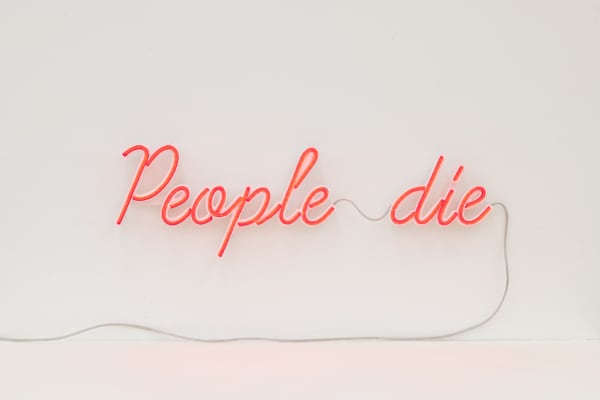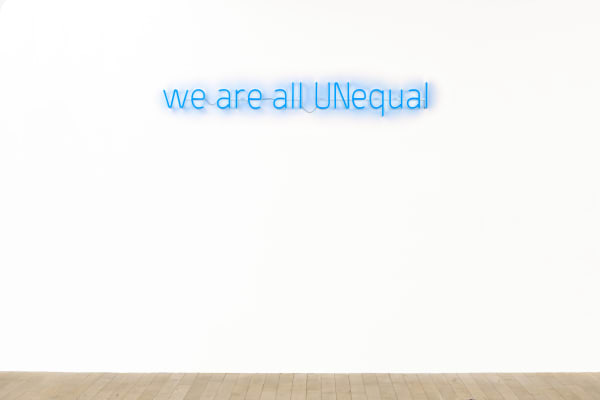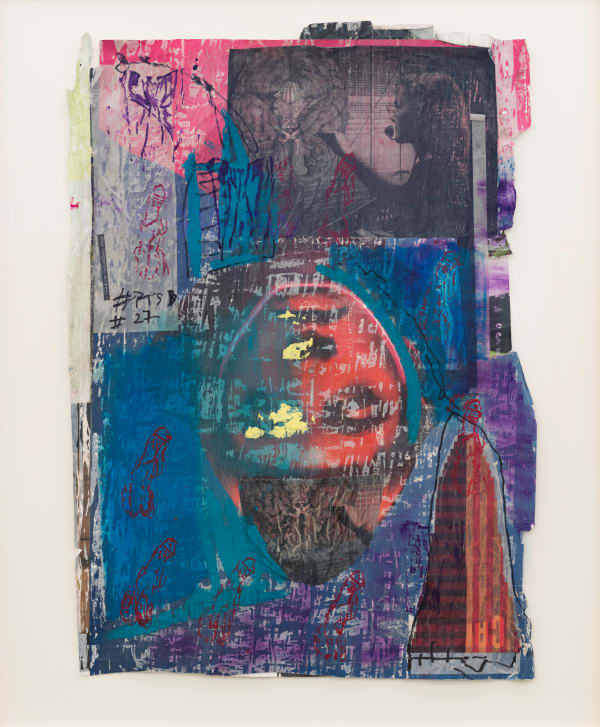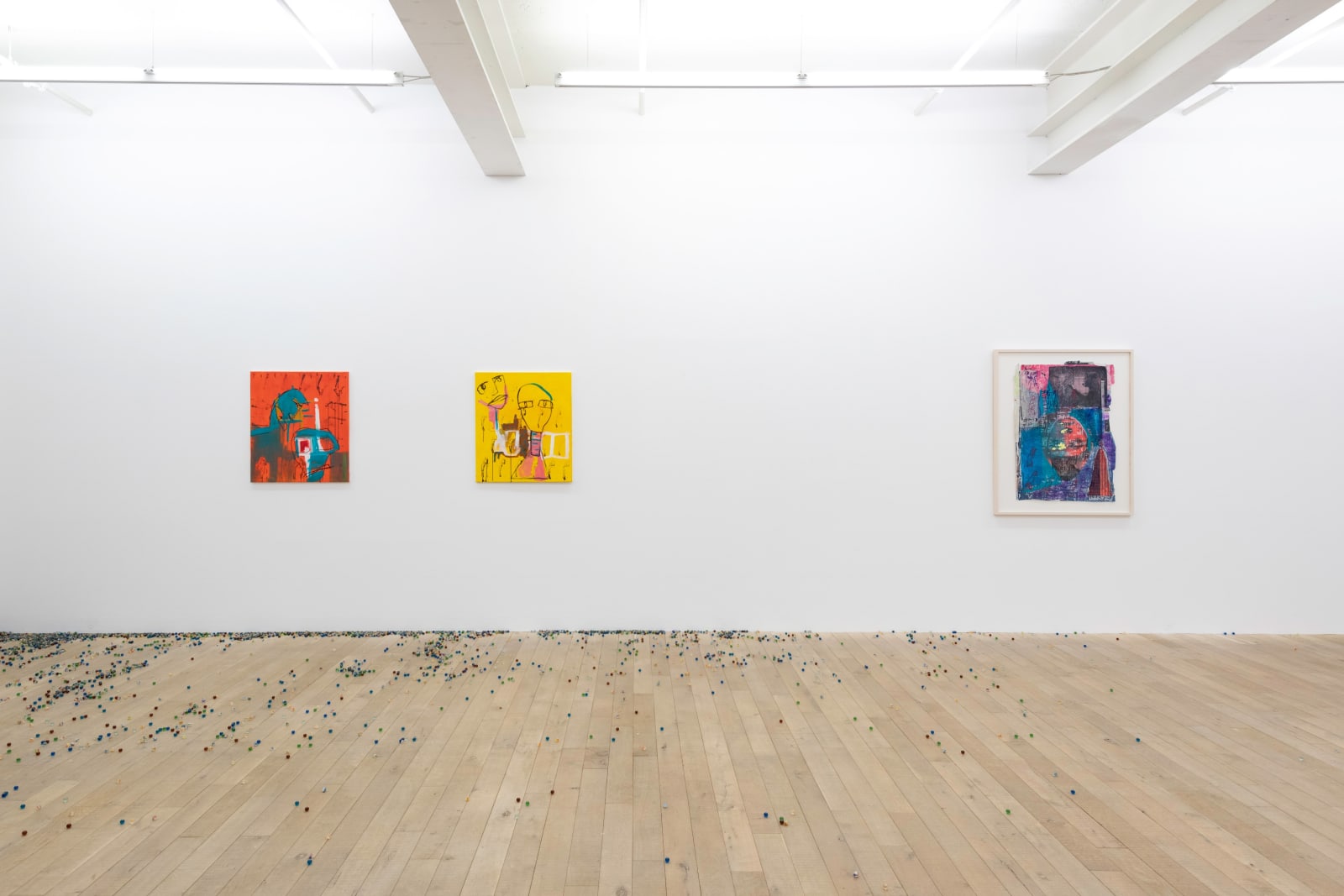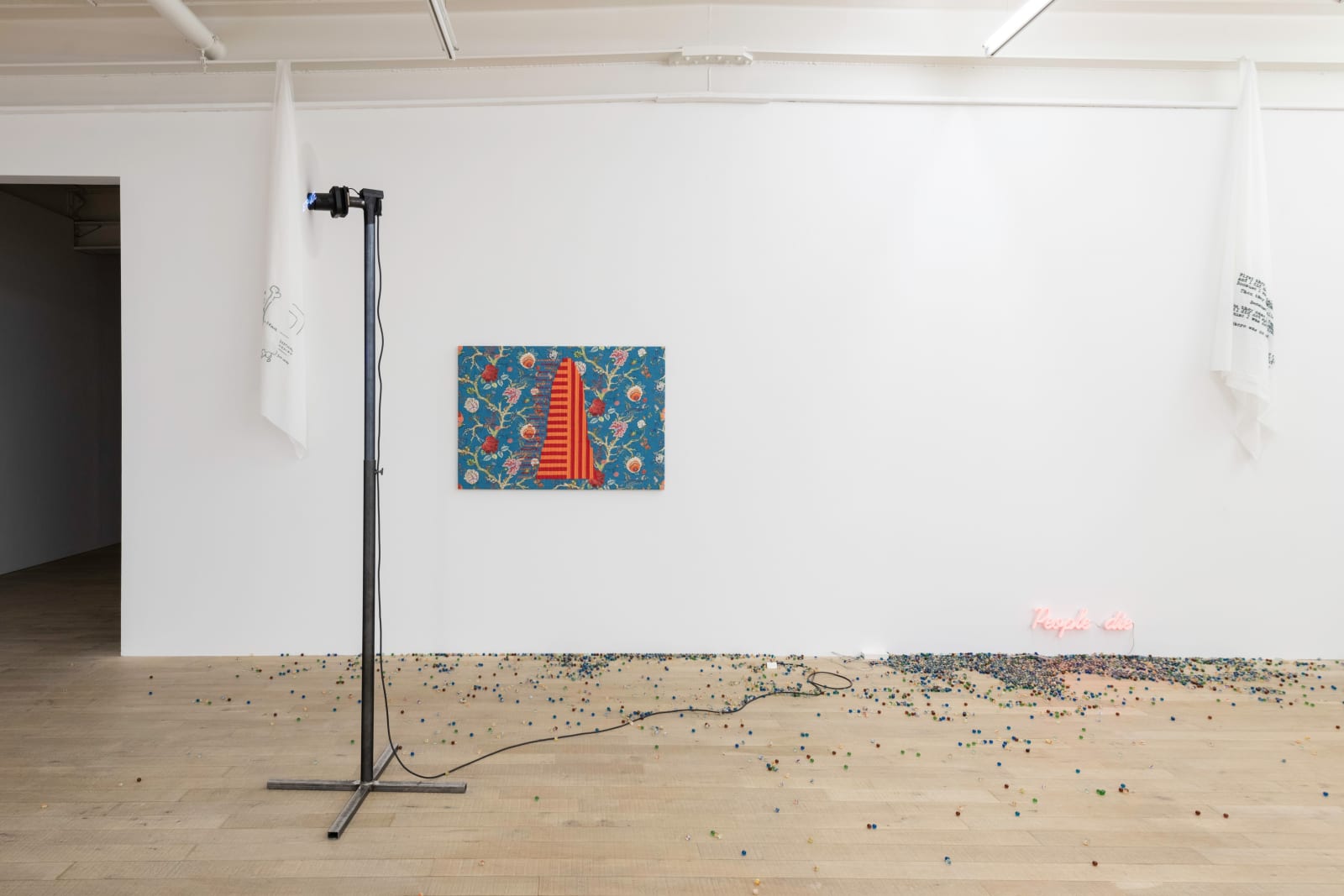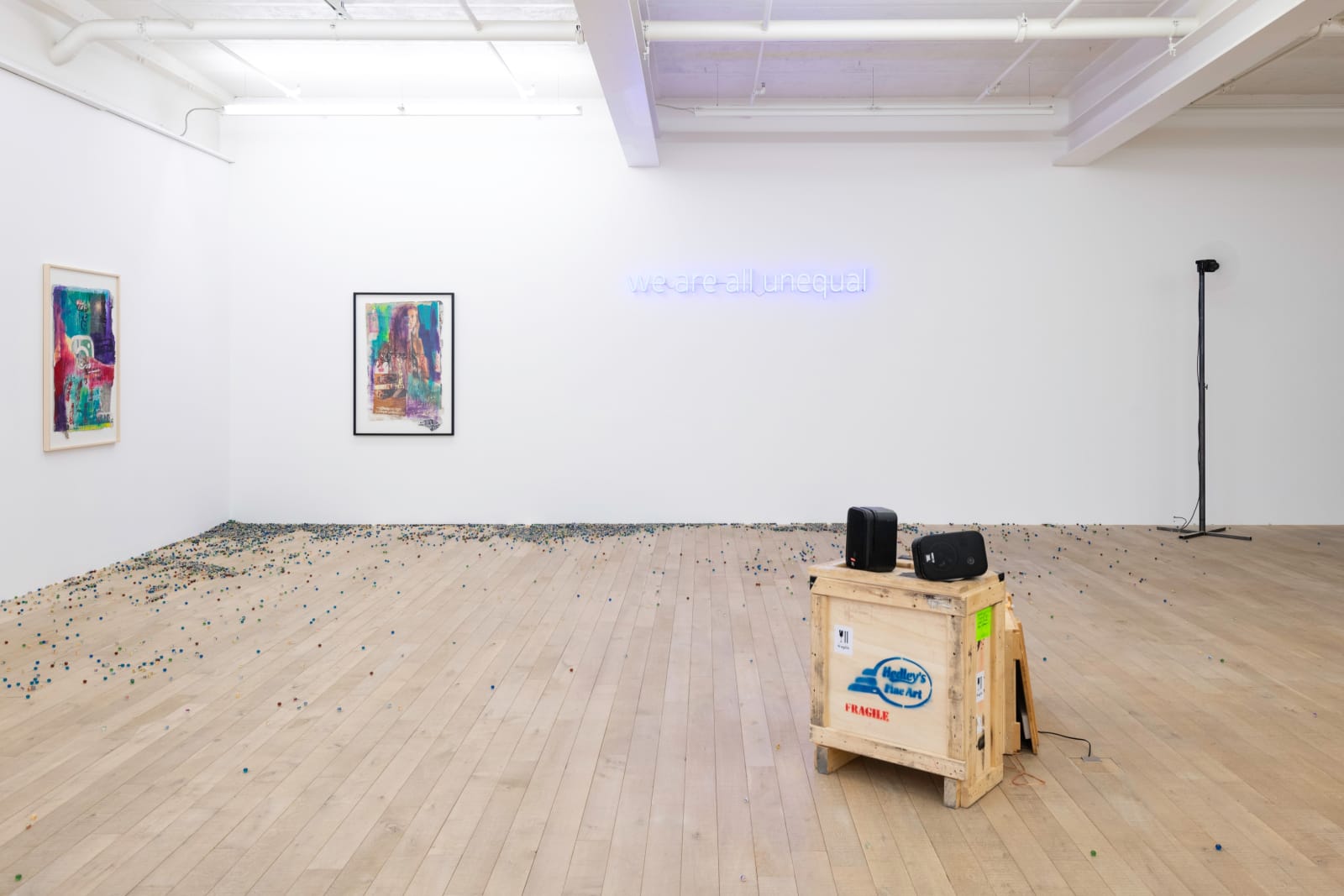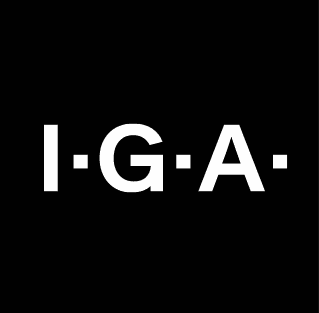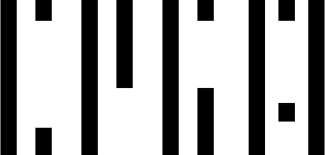Maja Bajevic: Watch Your StepGalerie Peter Kilchmann
Zahnradstrasse, Zurich
Galerie Peter Kilchmann is pleased to present Watch Your Step, the fourth solo exhibition by Maja Bajevic (*1967 in Sarajevo; lives and works in Paris) at the gallery. The exhibition will include a new group of works that reflects the entire diversity of forms of expression in Bajevic's artistic practice. On display will be a new video work, three light installations, a spatial and an audio installation, an embroidery and a selection of new collages.
April 8 - May 21, 2022
-
 Maja BajevićPeople die, 2022LED60 x 14 cm (23.6 x 5.5 in.)Ed. 1/3 (+ 2 AP)
Maja BajevićPeople die, 2022LED60 x 14 cm (23.6 x 5.5 in.)Ed. 1/3 (+ 2 AP) -
 Maja BajevićPTSD - My Shrink and I, 2022Oil and acrylic on canvas80 x 70 cm (31.5 x 27.6 in.)Sebastian Schaub
Maja BajevićPTSD - My Shrink and I, 2022Oil and acrylic on canvas80 x 70 cm (31.5 x 27.6 in.)Sebastian Schaub -
 Maja BajevićPTSD - Me and My Shrink, 2022Oil and acrylic on canvas80 x 70 cm (31.5 x 27.6 in.)Sebastian Schaub
Maja BajevićPTSD - Me and My Shrink, 2022Oil and acrylic on canvas80 x 70 cm (31.5 x 27.6 in.)Sebastian Schaub -
 Maja Bajevićwe are all UNequal, 2022LED21 x 200 cm (8 ¼ x 78 ¾ in.)Ed. 1/3 (+ 2 AP)Sebastian Schaub
Maja Bajevićwe are all UNequal, 2022LED21 x 200 cm (8 ¼ x 78 ¾ in.)Ed. 1/3 (+ 2 AP)Sebastian Schaub -
 Maja BajevićReally?, 2022Oil, stamp, collage on poster102 x 72 cm (40.2 x 28.3 in.)Courtesy the artist and Galerie Peter Kilchmann, Zurich, ParisSebastian Schaub
Maja BajevićReally?, 2022Oil, stamp, collage on poster102 x 72 cm (40.2 x 28.3 in.)Courtesy the artist and Galerie Peter Kilchmann, Zurich, ParisSebastian Schaub -
 Maja BajevićLick me on my riot, 2022Oil, stamp, collage on poster97 x 71 cm (38.2 x 28.0 in.)Courtesy the artist and Galerie Peter Kilchmann, Zurich, ParisSebastian Schaub
Maja BajevićLick me on my riot, 2022Oil, stamp, collage on poster97 x 71 cm (38.2 x 28.0 in.)Courtesy the artist and Galerie Peter Kilchmann, Zurich, ParisSebastian Schaub -
 Maja BajevićInsta-Visa, 2022Oil, stamp, collage on poster107 x 78 cm (42.1 x 30.7 in.)Courtesy the artist and Galerie Peter Kilchmann, Zurich, ParisSebastian Schaub
Maja BajevićInsta-Visa, 2022Oil, stamp, collage on poster107 x 78 cm (42.1 x 30.7 in.)Courtesy the artist and Galerie Peter Kilchmann, Zurich, ParisSebastian Schaub -
 Maja BajevićYou Take My Breath Away, 2022LED holograms, fan, metallic structure250 x 12 cm (98.4 x 4.7 in.)Courtesy the artist and Galerie Peter Kilchmann, Zurich, Paris
Maja BajevićYou Take My Breath Away, 2022LED holograms, fan, metallic structure250 x 12 cm (98.4 x 4.7 in.)Courtesy the artist and Galerie Peter Kilchmann, Zurich, Paris -
 Maja BajevićMa seule pensée, 2022Embroidery on cotton100 x 146 cm (39.4 x 57.5 in.)Courtesy the artist and Galerie Peter Kilchmann, Zurich, Paris
Maja BajevićMa seule pensée, 2022Embroidery on cotton100 x 146 cm (39.4 x 57.5 in.)Courtesy the artist and Galerie Peter Kilchmann, Zurich, Paris -
 Maja BajevićSale lesbienne, 2022Embroidery on cotton100 x 148 cm (39.4 x 58.3 in.)Courtesy the artist and Galerie Peter Kilchmann, Zurich, ParisSebastian Schaub
Maja BajevićSale lesbienne, 2022Embroidery on cotton100 x 148 cm (39.4 x 58.3 in.)Courtesy the artist and Galerie Peter Kilchmann, Zurich, ParisSebastian Schaub -
 Maja BajevićThe Knee, 2022Embroidery on cotton100 x 148 cm (39.4 x 58.3 in.)Courtesy the artist and Galerie Peter Kilchmann, Zurich, Paris
Maja BajevićThe Knee, 2022Embroidery on cotton100 x 148 cm (39.4 x 58.3 in.)Courtesy the artist and Galerie Peter Kilchmann, Zurich, Paris -
 Maja BajevićHop, Hop, Hop, 2022Single channel video, sound, color, 7:42 minEd. of 5 (+2 AP)Courtesy the artist and Galerie Peter Kilchmann, Zurich, Paris
Maja BajevićHop, Hop, Hop, 2022Single channel video, sound, color, 7:42 minEd. of 5 (+2 AP)Courtesy the artist and Galerie Peter Kilchmann, Zurich, Paris

